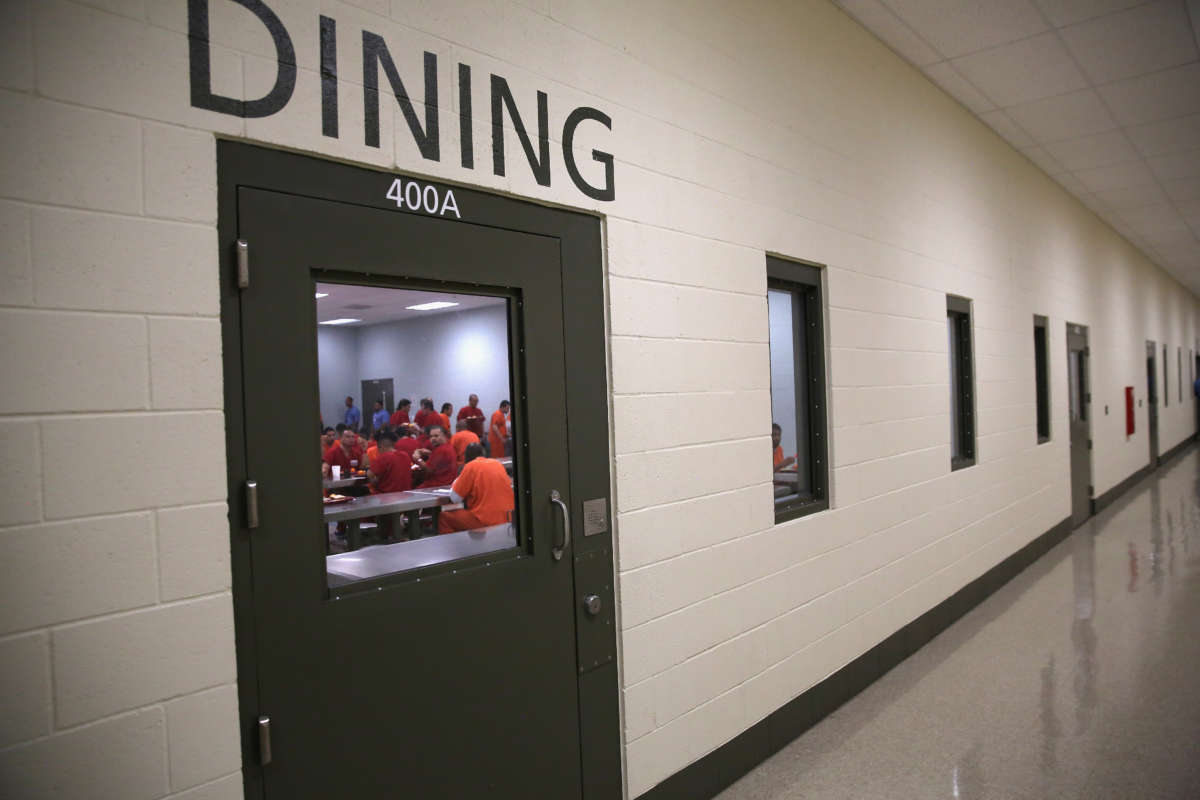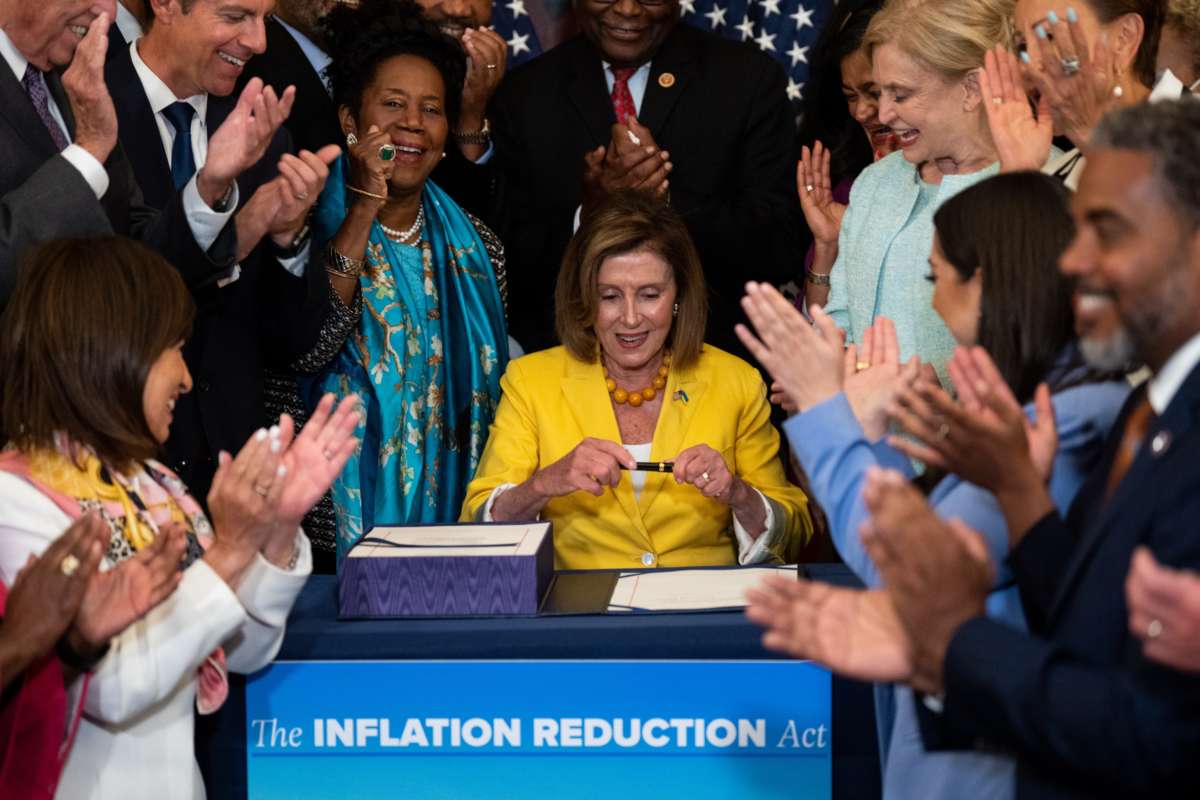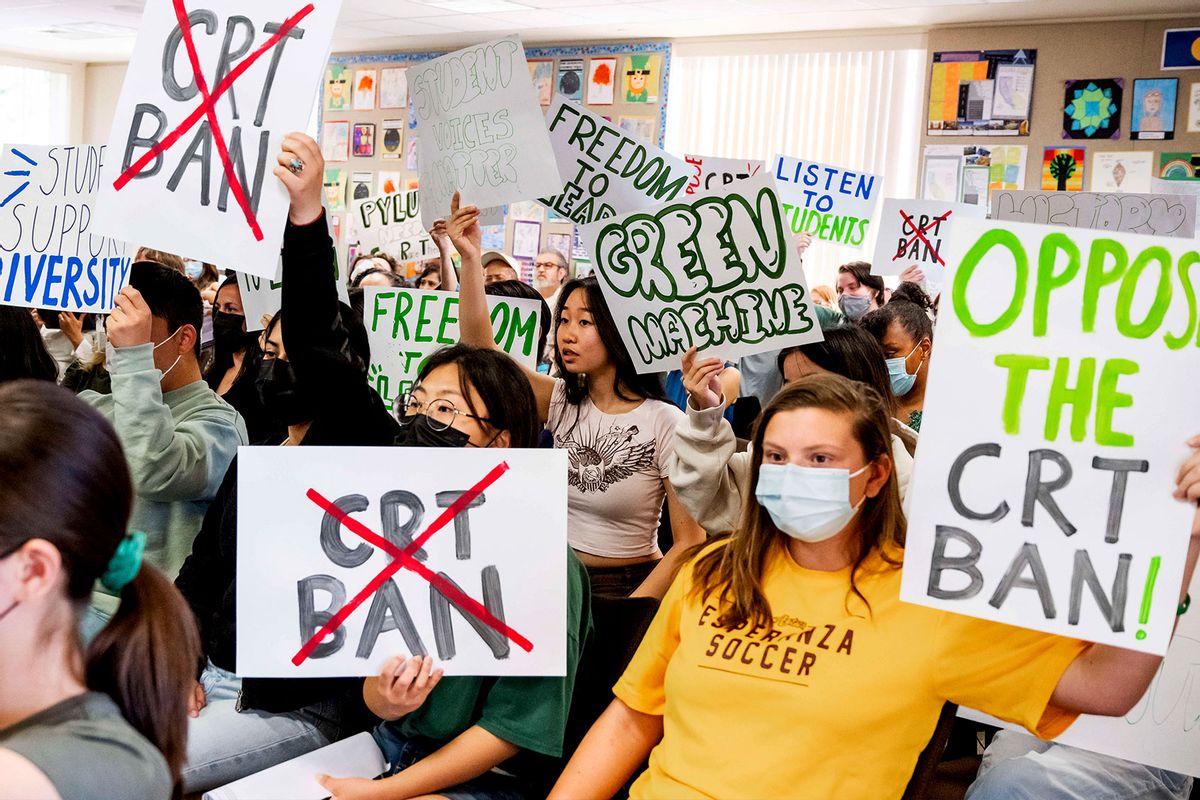INTERVIEW
Beyond the right-wing panic: Why "critical race theory" actually matters
Long before the racist backlash, critical race theory was a useful tool — for explaining racist backlash
By PAUL ROSENBERG
PUBLISHED AUGUST 13, 2022
Students against the CRT ban make their views known while pro-ban speakers talk during the public comment portion of a meeting of the Placentia-Yorba Linda Unified School Board in Placentia on Wednesday, March 23, 2022
(Leonard Ortiz/MediaNews Group/Orange County Register via Getty Images)
LONG READ
The 2020 Black Lives Matter protests were the largest civil rights protests in American history, so it was virtually a given there would be a potent backlash. The only question was what it would look like. The answer caught most everyone by surprise: an attack on "critical race theory," which most people — including most of the 2020 protesters — had never even heard of.
But for those who did know, it made a lot of sense. Critical race theory was created in the late 1970s and early '80s as a framework for understanding why the civil rights movement's historic gains in the 1950s and '60s did not produce an enduring trajectory of progress, and how a successful backlash against them had begun gaining steam.
"If you're trying to mount an effective backlash now, it's pretty smart strategy to discredit the ideas that explain how that works," explained sociologist Victor Ray, author of "On Critical Race Theory: Why It Matters & Why You Should Care," as I sat down to interview him about his just-published book.
Related
From "crack pipes" to "critical race theory": GOP midterm strategy is overt racism
Ray, who holds a PhD from Duke and is a nonresident senior fellow at Brookings, doesn't waste time trying to refute bad-faith arguments, nor does he give serious attention to those who make them. "Somewhat paradoxically, part of taking these attacks seriously means not attempting to directly refute or debunk many of the lies about critical race theory spread by bad-faith actors," he writes. In the 1920s, "the New York World published a national exposé of the Klan. Of course, many found the Klan revulsive. Nonetheless, engagement from the mainstream press increased Klan membership as their ideas were spread and seemingly legitimated."
Ray's focus is entirely on the body of ideas that the backlash promoters don't want the broad general public to understand. Because if people did understand what critical race theory really is, the backlash would be far less likely to succeed. The core ideas of critical race theory aren't obscure or difficult to understand, but they certainly pose challenges to the racial contradictions that have been part of American culture from the very beginning, from the first European contacts with Native Americans well before the first enslaved Africans were brought here in 1619.
To the extent that racist ideas have been woven into America's cultural fabric, it can be very difficult to grab hold of them. As the saying goes, "We don't know who first discovered water. We only know that it wasn't a fish." It's precisely because African-Americans have always been "othered," always been fish out of water in their native land, that they've been the ones to see clearly what white Americans as a whole are still struggling to see — or not to see. Ray's book provides a lucid account of the key concepts developed in critical race theory, and it's written specifically for those who do want to see, in hopes of give them the tools and language to work together to resist and reverse the current backlash and, in the words of Martin Luther King Jr., to "rededicate ourselves to the long and bitter, but beautiful, struggle for a new world."
This transcript has been edited for length and clarity.
As you note, the 2020 Black Lives Matter protests following George Floyd's murder were the largest civil rights protests in U.S. history, with record levels of white participation and ripple effects that included a conservative moral panic over "critical race theory," which was a brand new term to most people. That's a familiar pattern. "Historically," you write, "backlashes have attempted to roll back progress created by progressive social movements." So how is this backlash similar to earlier ones?
When we think of this backlash, we need to think of it on multiple fronts. So you have the backlash against what they're calling "critical race theory," which is often not critical race theory, it's diversity programs, more often a one-off complaint about a school. We have a long history of these backlashes targeting Black thought or Black thinkers, or even white abolitionists earlier than that, in order to suppress agitation and a collective body of knowledge used to mobilize against the taking of rights.
But it's also important to note that the same folks who are passing or attempting to pass anti-critical race theory bills all across the country are tied to a movement to overturn the last election. They're still working on that, or working to make sure that they can cast doubt on future elections — that's probably the most polite way to put it — by taking over state election machinery all over the country. So I think this is one movement. It's often considered like, they're doing this and they're doing that. I think it's good to think of it as one movement attacking voting and the manifestation of democracy, but also ideas that are about multiracial democracy and full inclusion in U.S. politics.
How does critical race theory itself help us understand what's going on here?
Critical race theory arose to explain the backlash that was constant during the civil rights movement, but really gained ground after the victories of the Voting Rights Act, the Fair Housing Act, the later civil rights movement. By the late '70s and '80s school desegregation in a lot of places had slowed, access to jobs, which had increased quite a bit, also started to slow. Critical race theorists wanted to explain why.
One of the reasons critical race theory is under attack is that it does an excellent job explaining the backlash. So if you're trying to mount an effective backlash now, it's smart strategy to discredit the ideas that explain how that works.
Advertisement:
So folks like Derrick Bell and Kimberlé Crenshaw looked at the law and saw that there were parts of it that were very accommodationist. They saw that colorblind legal theory didn't allow for more profound interventions that could not just say "stop discriminating," but could deal with the long-term effects of structural discrimination in things like segregated housing. So they came up with a critique of the law that interrogated both liberal and conservative ideas about the law to explain the backlash.
I actually think that this is one of the reasons that critical race theory is under attack at the moment, in that it did an excellent job explaining the backlash, and it spread to other fields. So if you're trying to mount an effective backlash now, it's pretty smart strategy to discredit the ideas that explain how that works.
You write that "race is a social construction," and that seeing things this way "turns mainstream ideas about race on their head." First, what does that mean, to see race as a social construction? Why is that so, and why is it important?
So what it means is that the social and political aspects of race are what is most important. I think the idea is probably pretty widespread that race is somehow a biological category. What critical race theory says is that's not the case, and that race has been constructed, in part, through the law.
The example that I use here is the history of racial categories in the United States. It started under slavery, and these categories incentivized enslavers to enslave their children and they also incentivized sexual assault. But the law early on said that the race of a child followed that of the mother. So if an enslaved woman had been assaulted and had a child, her child was considered Black, and therefore could become the literal economic property of the slave-owner.
The laws changed over time, and who was categorized as Black often varied by state, but I also discuss the eugenics movement, in which fears about interracial dating and the "degeneracy" of the white race because of interracial dating led to the rise of the "one-drop" rule, and the idea that anyone with any portion of Black blood was considered Black. So these don't follow any kind of logic — or, I mean, they follow an economic logic and a logic of racial domination. But they don't follow any kind of biological rule. So that's what social construction means, that the social and political aspects are more important.
So why does that turn mainstream ideas about race on their head?
Well because mainstream ideas are tied to biology, and critical race theory undermines that. It says there's nothing essential about racial categories, there's nothing biological about them. These are social facts that are employed in the use of racial domination, and they actually developed historically to justify various kinds of domination and exclusion.
The mainstream understanding of racism is in terms of conscious individual attitudes, but you write: "Rather than seeing racism as purely individual, critical race theorists argue that racism is structural," adding that "Structural racism created race." First of all, what is meant by "structural racism"?
Structural racism doesn't mean that individuals aren't important, but it means that racism is often built into law, policy and practice in ways that compel individuals, sometimes independent of their own personal like or dislike for another group, to behave in ways that reinforce racial inequality.
You hear these codewords about how parents want to send their children to good schools, in good neighborhoods. Well, those "good neighborhoods" were constructed in an era of explicit racial exclusion.
We can think about this in a whole bunch of ways, but one of the ways we can think about it is segregated schools and segregated school districts, where you hear these codewords about how parents want to send their children to good schools, and want to be in good neighborhoods. Well, those good schools and good neighborhoods were constructed, oftentimes, in an era of explicit racial exclusion. Folks literally had deeds on their homes that did not allow white families to sell their homes to Black folks.
So our landscape in America is still based on that kind of discrimination, although that discrimination is now illegal. We hear about it being reinforced all the time in studies that show that black homeowners receive less remuneration for their homes, which are less valuable so their taxes go less far in providing schools in Black areas, since in many places school funding comes from local property taxes. So this creates a cycle of advantage and disadvantage that's often reinforced by what appear to be individual choices, but it's built into how we've structured our physical environment and how we've structured our tax laws.
That answered the second question I was going to ask, about the kinds of things the individual account misses or obscures. So how does structural racism create race?
There are accounts of the rise of racial categories, and in fact I just gave one: Under slavery and colonialism a racial group was identified, and then the identification of that group was a sort of after-the-fact justification for being able to exploit them. So you can enslave African-American folks because they are somehow different, and then you come up with the justification: That difference is biological, eternal, unchanging, the kinds of thinking you hear from eugenics thinkers. There was a whole edifice built on top of economic and political rationales that became taken-for-granted racial categories. And that is the inverse of how folks typically think about racism as a feeling of animus based on difference. It's actually a use of difference to justify colonization or slavery or other forms of exploitation
Another key concept that comes out of critical race theory is "colorblind racism," which, you write, "uses allegedly neutral language and policy toward racially biased ends."
What's an example that illustrates how this works?
So I quote Lee Atwater, who was a Reagan adviser and one of the key architects of what became known as the "Southern strategy." I'm not going to quote it in full here, but Atwater has this quote about how "we," meaning conservative politicians, used to be able to use the n-word, and at a certain point — after 1965, I think he said — that became a liability. So "we" started talking about things like states' rights and taxes, and the thing that connects all these is the fact that Black folks get hurt more than whites. I also use this quote from a Nixon adviser, in which — again, I'm paraphrasing — Nixon said the whole problem was really the Blacks, but he needed to devise a system that recognizes that without appearing to.
So I will say that colorblind racism isn't a secret. Like, they told us they were doing this. It's not some secret strategy that was cooked up in smoky back rooms. They were very open about the Southern strategy and they were very open about weaponizing race in order to get these kinds of social policies through. The key, they knew, was using dog whistles and code words like "welfare queens" or "states' rights" that were tied to racialized conceptions but also offered a kind of plausible deniability that wouldn't necessarily land them in political trouble.
This has evolved. You cite examples such as trying to portray Martin Luther King Jr. as aspiring to a colorblind paradise. So why is that problematic? How does it evolve, beyond just the strategy of those who promote racial exclusion to something that confuses the broader political mainstream?
Well, it offers plausible deniability, and it allows folks to support policies that are going to, as Atwater said, hurt Black folks worse than whites while feeling like they haven't done that. There's good evidence that welfare — partially in response to Reagan's conception of "welfare queens" — became a policy that was heavily associated with Black Americans. And in a lot of states you'll see that as the proportion of minorities rises, welfare generosity actually decreases. Now, welfare helps everybody, and just in pure numbers, more whites benefit from welfare. Yet they oftentimes can be induced to vote against their self-interest because, asAtwater said, these other folks are getting hurt worse than whites.
You saw this around things like Obamacare — "Obamacare" itself is a kind of dog whistle for the Affordable Care Act — where polls at the time showed that if you told people what was included in the policy they supported it, and then they heard "Obamacare" and immediately no longer supported it. So it's a strategy to get folks to vote against their self-interest.
There's a set of four narrative frames that have been used to explain what's going on in colorblind racism. I'd like you to talk about a couple of those, starting with "abstract liberalism."
This framework came from Eduardo Bonilla-Silva, who was my graduate adviser, in his book "Racism Without Racists." It allows a sort of commitment to equality in the abstract to stand in for policies that will achieve or get us closer to equality in reality. So the abstract commitment can sort of undermine the material commitment. An example is affirmative action. You hear a lot of folks say, "I believe in equality, and therefore I'm against affirmative action," even though affirmative action has been shown to be very effective in intervening in widespread schooling inequalities that lead to differential rates of college entrance between Black and white Americans. So that abstract commitment allows folks to still feel like good liberals while voting against or being opposed to policies that would make equality closer to reality.
The second framework I'd like to ask about is minimization.
So with minimization, the idea is that the past is the past. Yes things used to be bad, but we have overcome — not we shall overcome, but we have overcome — and a focus on continued inequality is detrimental. The idea is that everyone has it equally hard in the United States, although empirical evidence just doesn't show that. So by minimizing existing inequalities and existing barriers it minimizes the importance of race and racism.
Critical race theory does recognize racial progress, but also sees it as a contingent product of struggle and always subject to reversal. It also highlights what's called "interest convergence," when white interests overlap with the Black freedom struggle. How was interest convergence crucial to the decision in Brown v. Board of Education?
Bell's notion of interest convergence again challenges mainstream ideas of racial progress as happening because of white goodness or commitment to equality — although Bell is very clear, and I want to be clear here, that there have always been white Americans who are committed to equality in principle, and who have worked toward it. But Bell says it has not always been a majority or enough to lead to substantive progress. So Brown v. Board is held up — rightly so — as a crowning achievement of the civil rights movement, and as the victory of reason over base prejudice.
One of the decisive things that led to Brown v. Board of Education was that elite white interests converged with something the Black civil rights movement had pushed for for a very long time.
Bell says, look, the reasons to oppose segregation were there all along. But it was actually worries about the Cold War, and the successful use of Soviet propaganda on American race matters to undermine America's position as a democracy, because they rightfully saw American race relations as hypocritical. Bell says that was one of the decisive things that led to the Brown decision, because white interests — or elite white interests — converged with something that the Black civil rights movement had been pushing for for a very long time. These elite white interests could claim a kind of propaganda victory in the Cold War based on now having desegregation as the law of the land. So that, in a nutshell, is interest convergence — the idea that Black progress on race matters has most often occurred when Black interests converge with white interests more broadly
You could also say something similar about the Reconstruction Era, and then about how that passed very quickly.
Bell actually says that part of the Civil War was fought over interest convergence, and over differing interests between the white industrializing North and the "backward," slaveholding South, and the repeal of redemption, after Reconstruction, was white Northerners agreeing to basically take the troops out of the South and be hands-off. That allowed the rise of Jim Crow and nearly a century of racial terror and disenfranchisement, consignment to the lowest jobs and opportunities, inferior education, all the horrors of Jim Crow.
Another concept you discuss is "whiteness as property." That might strike some people as an odd notion. So what does that mean?
Whiteness as property means that throughout U.S. history whiteness has provided differential access to property, and has served as a kind of property. It allows one access to getting a job, to buying property. When we think of the history of U.S. enslavement, Black folks were actually property for quite a long time. And we think of the movement across the frontier and the theft of Native lands — there were all kinds of rationales developed to explain why Natives had no right to that property.
Cheryl Harris wrote this, I think, classic piece, "Whiteness as Property," which outlines that history and shows how whiteness provided access to various kinds of property. That has led — this is not necessarily in Harris — through things like compounding interest or the ability to inherit, to the profound wealth gap we see now, where the average white family has something like 10 times the wealth of the average Black family.
There's a lot in your book that I haven't had time to mention or explore in any depth. So what's the most important question I didn't ask? And what's the answer?
Did you ask why this is happening now? Yes, we talked about the backlash. I will say this: I think critical race theory matters because race is a central political fault line in U.S. history. It is an enduring problem that is very difficult to solve. This backlash is intentionally sowing confusion and panic, and I think critical race theory tends to provide some clarity and profound solutions to dealing with this problem, or at least thinking through it in a better way. I think losing the ability to do that is harmful.
Read more
about the "critical race theory" backlash







.png)

